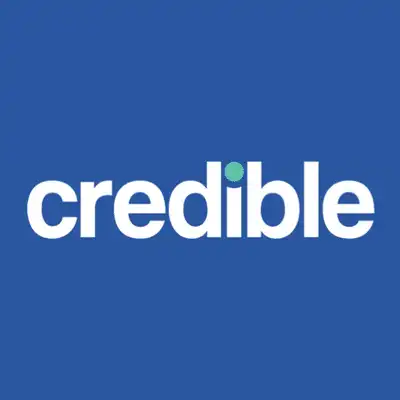When applying for aid to go to college, you may have many options, including scholarships and student loans.
But you might wonder how is a student loan different from a scholarship? There are many differences you must understand because scholarships you won’t repay, but with student loans you do.
Table of Contents
How Is a Student Loan Different From a Scholarship?
You must repay student loans. It’s borrowed money to pay for college. Student loans are meant specifically for college expenses and may be deferred while in college.
Scholarship money isn’t a loan. Instead, it’s money you win based on your academic achievements or other accomplishments, such as being part of a club or sport. You might even get scholarship money based on your religion, ethnicity, or where your parents work.

What Is the Biggest Advantage of a Scholarship Over a Loan?
Scholarships have one significant advantage over loans – you don’t have to pay them back. Instead, you use the money as intended and don’t pay interest or make any payments. In addition, the money is free if you satisfy the terms, such as attending the college it’s meant for or participating in a specific activity.
Defining Student Loans
Before taking on student loans, you should understand how they work, including eligibility criteria and the types of student loans available. Then, when searching for the best student loans, consider Credible, a marketplace where you can receive personalized prequalified rates in one place.
The nice thing about Credible is you can view personalized prequalified options side-by-side. All personalized prequalified options are based on your credit score, but your credit score will be unaffected[1].
Credible doesn’t sell your information to third parties, and all personalized prequalified rates provided are based on your personal factors, with no bias.
Find private student loans with fixed and variable APR. It only takes 3 minutes. You can check your rate without affecting your credit score! [1]
- View multiple lenders at the same time
- No hard credit check
- Instant prequalified rates
- Easy experience from start to finish
- Some lenders are not available
Student Loan Eligibility
The loan eligibility will differ depending on the loan you’re applying for. Federal student loans require the following:
- You must be a US citizen
- You must have a valid Social Security number
- You must be enrolled in an accredited school at least part-time
- You must prove academic progress
- You cannot be in default on any federal loans
If you exhaust your federal student loans and need more money, you may apply for private student loans. Like loans from banks or credit unions, you must prove you can afford the loan and have a solid credit history.
If you’re graduating high school, you may not have a credit score or income, but you can ask your parents or other relatives to cosign the loan for you so you can get approved.
Applying to FAFSA
To be eligible for federal student loans, you must complete the Free Application for Federal Student Aid (FAFSA). In addition, you must complete the application process every year you plan to attend school, disclosing your family’s financial information.
As the name suggests, the application is free, but the closer you complete it to October 1st (when it’s released), the higher your likelihood is of getting more money, including free money from grants or scholarships.
Applying for a Student Loan
After completing the FAFSA, you’ll receive an award letter if you’re eligible for aid. You’ll see how much the school you plan to attend will award you if approved. After choosing the school and award, you must notify the financial aid office of the college you’re attending, and they’ll handle the rest.
Pros
- Low-interest rates
- Deferred payments until you graduate or are no longer attending college
- Offers many repayment options, including income-driven repayment and student loan forgiveness plans to make payments more affordable
- A credit score isn’t required, but proper student loan payments can help you build credit
Cons
- The loans must be repaid and will charge interest
- You can only borrow so much, and it might not be enough to cover your costs
- Defaulting can be damaging to your credit score
Subsidized vs. Unsubsidized Loans
When you apply for student loans, you may be eligible for subsidized or unsubsidized loans. Direct subsidized loans are for students that demonstrate financial need, which is determined when you complete the FAFSA.
If you meet the eligibility criteria for subsidized loans, the federal government covers the interest on your loan while you’re in school and during any grace periods or deferments. This decreases the amount you must repay when you borrow money.
Unsubsidized loans also have the benefit of lower interest rates and deferment, but you are responsible for 100% of the interest charges. You can still take advantage of the deferment periods, but interest will accrue on the balance, increasing the amount you owe.
Federal vs. Private Student Loans
Most students first exhaust their federal student loans before turning to private student loans. As we discussed earlier, the qualifying criteria for federal student loans is much simpler than private loans. They don’t check your credit or ability to repay federal student loans.
Private banks provide private student loans; each has different qualifying requirements. For example, you may need a certain credit score or amount of income to prove you can repay the loan.
You may also have a variable interest rate versus the fixed-rate federal student loans offer, and you may not have a grace period while in school. Credible can help you receive personalized prequalified options for private student loans.
Related Article: Should I Refinance Student Loan Debt?
Defining Scholarships
Scholarship money has the benefit of not requiring repayment. It’s not a loan; it’s a gift based on your achievements. You may find scholarship money because of the major you’ve chosen, your grades in high school, or the church you attend. There’s no limit on scholarship funds.

Scholarship Eligibility
You can apply for as many scholarships as you have the time to consider. Each has a different application process and eligibility criteria. Always read the criteria to ensure you meet the requirements and determine what’s necessary to apply. For example, some require you to write a paper or submit certain documentation to prove you’re eligible for the scholarship.
Finding and Applying to Eligible Scholarships
Finding scholarships requires more work than applying for student loans, but the free money makes it well worth it.
A few places to check include:
- The school’s financial assistance office
- Public library
- High school counselor
- Local organizations
- Your parents’ employers
- Your employer
Don’t forget Google. A quick search online will turn up many opportunities for scholarship money. Just make sure they are legit before providing any personal information.
Pay close attention to the required deadlines and what’s required of you to apply for the scholarship to complete the application process.
Going back to school? Checkout these great scholarship opportunities for adults over 30!
Pros
- Repayment isn’t required
- You may be able to attend a college you otherwise couldn’t afford
- You don’t have to have loans to go to college
Cons
- Can be competitive to obtain
- You must keep up with the requirements to maintain your scholarship
- You may only spend the money as the scholarship allows
Defining Grants

Grants are also free money for college expenses, but the awards are based on financial need, not merit. Like scholarships, you don’t have to repay grants; the money comes from the federal or state government.
Grant Eligibility
The eligibility criteria for a grant varies but usually focuses on your family income, the school’s cost, and any special circumstances you have, such as a disability.
Applying for a Grant
Like most financial aid, you must first complete the Free Application for Federal Aid to apply for a grant. This helps the federal government determine your financial need. There aren’t any other applications to complete after completing FAFSA. Your school’s financial aid office will notify you if you’re eligible for grants.
Pros
- Repayment isn’t required as long as you meet the criteria
- There’s less competition based on merit or other qualifying factors, as grants are based on need
- Gives opportunities to lower-income families who otherwise couldn’t afford college
Cons
- There are only a select few grants available each year
- Grants don’t often cover the full cost of a college education
- You must apply early because when funds run out, they’re gone
Related Article: How to Refinance a Student Loan [Ultimate Guide]
Additional Forms of Student Aid
In addition to scholarships, student loans, and grants, there are a few other options for student aid.
Aid for Military Students and Families
Military students and families may be eligible for certain types of financial aid, including grants and special loans with low-interest rates and no interest accrual.
Aid for International Students
If you study abroad, you may be eligible for international student aid. However, like federal student loans, you must complete the FAFSA to determine eligibility.
FAQs
What Is a Work Study Program?
A work-study program is a federal program to help students in need get the financing needed for school. Students work part-time jobs to get funds to pay for their school enrollment.
How Soon After Leaving School Do You Need to Start Paying Your Students Loans?
The standard grace period is six months after you graduate. However, depending on your circumstances, you may be able to have the period extended.
How Much Should I Expect My Student Loan Payment to Be After Leaving My Program?
The standard student loan repayment amortizes the loan over ten years. However, if you apply for an income-based or another repayment plan, you may have longer to repay the loan, lowering your monthly payment.
When Should I Start Applying for a Grant, Scholarship, or Loan?
The FAFSA is released on October 1st of each year. Complete the application as close to that date as possible to increase your chances of getting more grants, scholarships, or loans.
Is There a Difference Between Paying Back a Subsidized vs. Unsubsidized Student Loan?
Subsidized loans have interest covered by the government while you’re in school or during deferment. Unsubsidized loans accrue interest from the first disbursement date, whether you are in school or not, and the government doesn’t cover the cost.
Which Educational Institutions Typically Cost the Most to Attend?
Private schools cost more than public schools to attend. Of course, there are private schools that are for the elite only because of their cost, but many private schools are still affordable.
The Bottom Line
So how is a student loan different from a scholarship; simply put, loans require you to pay back the funds, while scholarships don’t. If you’re considering going to college, you may be eligible for grants, scholarships, or student loans. If you must borrow money to go to college, explore your personalized prequalified options using Credible to ensure you get the loan with the most favorable terms.
[1] Requesting prequalified rates on Credible is free and doesn’t affect your credit score. However, applying for or closing a loan will involve a hard credit pull that impacts your credit score and closing a loan will result in costs to you.
Samantha Hawrylack is a personal finance expert and full-time entrepreneur with a passion for writing and SEO. She holds a Bachelor’s in Finance and Master’s in Business Administration and previously worked for Vanguard, where she held Series 7 and 63 licenses. Her work has been featured in publications like Grow, MSN, CNBC, Ladders, Rocket Mortgage, Quicken Loans, Clever Girl Finance, Credit Donkey, Crediful, Investing Answers, Well Kept Wallet, AllCards, Mama and Money, and Concreit, among others. She writes in personal finance, real estate, credit, entrepreneurship, credit card, student loan, mortgage, personal loan, insurance, debt management, business, productivity, and career niches.


